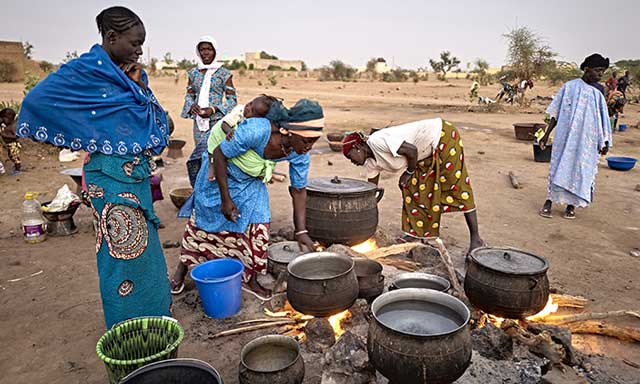
Mopti, Mali | AFP | After years of ethnic massacres and unrelenting jihadist attacks, central Mali has been left a harrowed area of deserted villages and displaced people.
An Islamist insurgency erupted in the north of the vast west African state in 2012, claiming thousands of military and civilian lives since.
But the violence has since swept into the centre of the country — as well as neighbouring Burkina Faso and Niger — inflaming ethnic tensions along the way.
Central Mali is now prey to tit-for-tat killings and routine jihadist attacks. Hundreds of thousands of people have been displaced.
Mamadou Lamine Diop, who works in central Mali for the United Nations’ refugee arm, said the situation “has not stopped deteriorating”.
Armed groups coming from the north found fertile soil in an area riven by long-running land disputes, often between herders and farmers.
A jihadist group active in the region led by radical Fulani preacher Amadou Koufa has also increased suspicion of his ethnic group.
In response to jihadists, traditional Dogon hunters have formed so-called self-defence groups, adding to the tension.
“Every day, word gets back to us of an extremely serious incident,” Diop said, explaining that people are displaced after each one.
Many Fulani villages now lie empty.
“These are ghost villages. Only huts are left; nothing else. Everyone has gone,” said a humanitarian worker who requested anonymity.
The displaced congregate in central Mali’s large towns, such as Mopti and Sevare. Out of 200,000 people displaced by Mali’s conflict, half are located in the country’s centre.
Boureima Barry, 56, is one such displaced person. He fled his village, several kilometres from the town of Bandiagara.
He told AFP he was among the first to leave in April last year. Now everyone is gone.
“It’s been a year and the situation hasn’t improved,” he said from a tent in a makeshift displaced persons’ camp in a football stadium in Sevare.
– No protection –
Alioune Tine, an independent expert sent to central Mali by the United Nations in late February, said that neither Malian troops nor UN peacekeepers were able to protect civilians.
The UN has some 13,000 people stationed in Mali as part of its MINUSMA peacekeeping mission in the country.
Tine pointed to the mostly Fulani village of Ogassagou near the Burkina Faso border, where some 30 people were killed last month.
About 160 people were killed in an attack on the same village in March last year.
“That means that protection for civilians is not there,” he said.
People who have not yet fled their villages also face deep food insecurity problems, according to the United Nations.
The governor of Mopti, Abdoulaye Cisse, said the general situation in central Mali was worrying but “not insurmountable,” pointing to locally brokered ceasefires as bright spots.
– ‘Thousands of deaths’ –
“Whatever we do, one day or another, we will sit down,” Cisse said, referring to talks with militant groups.
“Why wait until there are thousands of deaths to go back to negotiations,” the governor added.
The sentiment is now shared at the highest levels of government in Mali.
Last month, the government admitted for the first time that it was trying to establish talks with militant groups — an option it had long ruled out.
“It is possible to negotiate something with Amadou Koufa,” said a local security official who declined to be named, referring to the radical Fulani preacher.
“The local roots of Koufa’s group make dialogue possible,” the official added.
The al-Qaeda-affiliated jihadist alliance of which Koufa’s group is a member said last week that it was open to the possibility of talks.
 The Independent Uganda: You get the Truth we Pay the Price
The Independent Uganda: You get the Truth we Pay the Price



